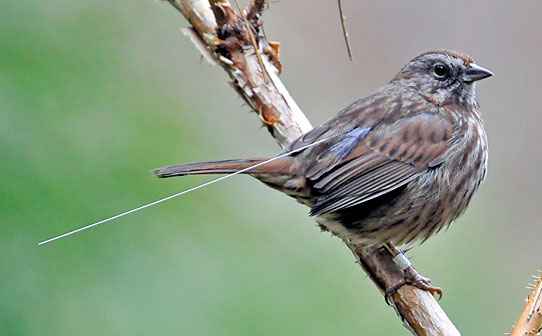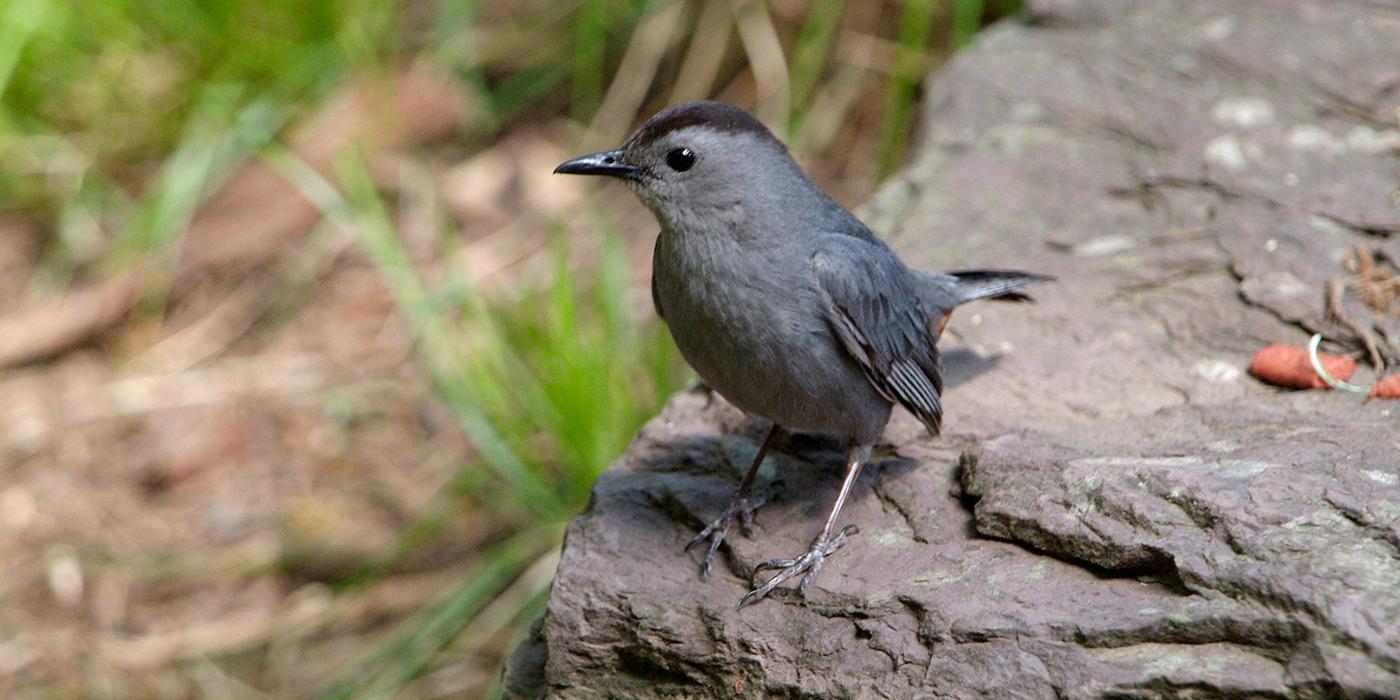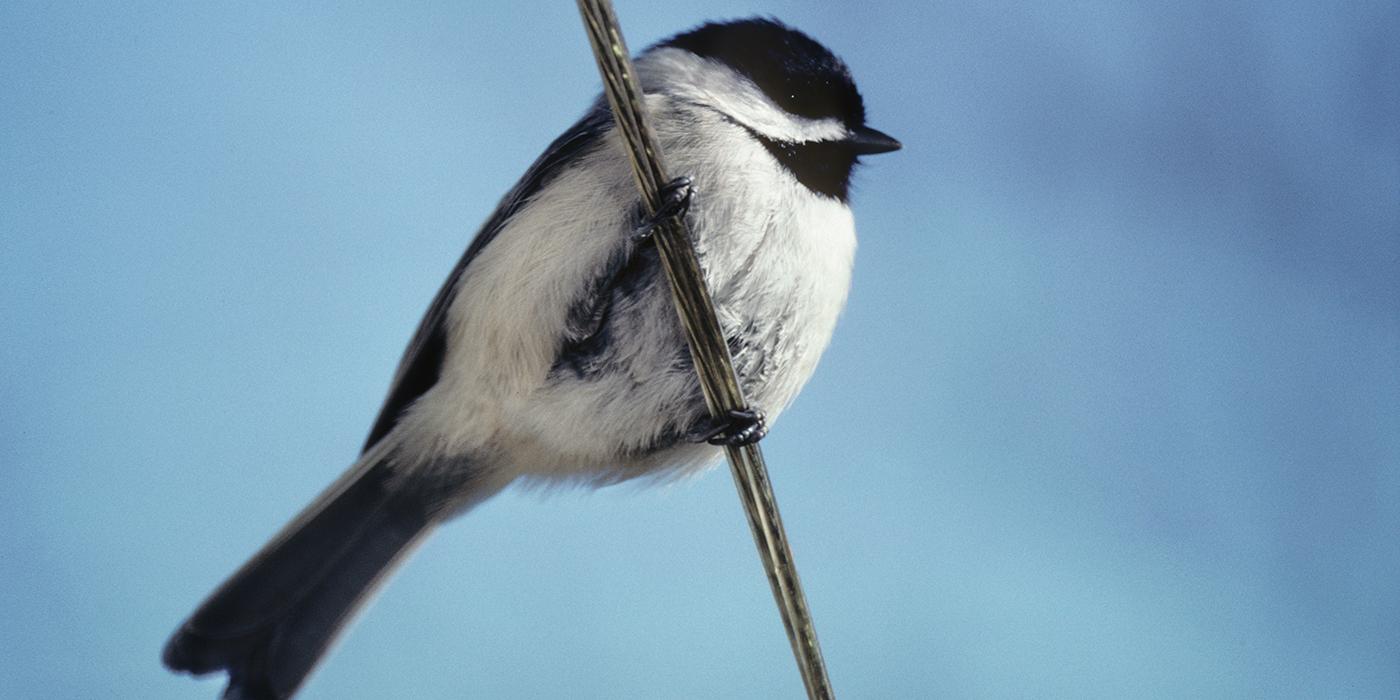A Wealth of Knowledge from an Everyday Bird
Song Sparrow
Let's start with a question: What songbird is twice as large and twice as dark as a song sparrow?
The answer: a song sparrow.
With more than 20 recognized subspecies, the song sparrow is one of the most variable bird species in North America (some ornithologists put the number of subspecies close to 50!).
While song sparrows are quite common across the United States, Canada, and parts of Mexico, it is very likely that the song sparrow at your bird feeder looks markedly different than a song sparrow 500 miles away.
Generally a brownish species, birds range from sandy tan in the desert Southwest to reddish brown in the Pacific Northwest to gray in Alaska'some Mexican populations even have pure white throats. More impressive is the vast difference in size between subspecies, with the smallest subspecies, from salt marshes near San Francisco, weighing in at just 18 grams and the largest, on the Aleutian Islands in Alaska, weighing in at over 40 grams—Incredible-Hulk-sized for a sparrow.
In addition to this morphological variation, subspecies also show considerable variation in life history, or the progression through life stages such as growth, reproduction, and migration. For instance, the subspecies in Baja California lays an average of just 3 eggs per nesting attempt, with several nesting attempts possible per season, whereas the Alaskan subspecies lays an average of 4 eggs per attempt, with only 1 attempt possible because of the short Arctic summer.
Migratory behavior is also highly variable, both across subspecies and within single populations. Some populations are almost completely migratory, notably those in northeastern North America. Numerous subspecies in western North America are completely sedentary, including some populations as far north as Alaska.
Yet other subspecies include both individuals that migrate and individuals that overwinter on the breeding grounds. While these migratory differences are likely influenced by genetics, there can also be variability within individuals, with the same bird migrating one year, but overwintering on the breeding ground the next, although quantitative data on this phenomenon are rare.
A more familiar aspect of this bird's life is its distinctive, melodious song (which, not surprisingly, has distinct local dialects across subspecies and populations). Accomplished singers, male song sparrows learn about 10 different songs, using these to attract potential mates and defend breeding territories.
Animal behaviorists have studied song in this species to understand an array of questions, including whether individuals recognize neighbors (they do), how they communicate aggressive intent (it seems singing very softly is a good indicator), and how nutrition during early life influences song learning and complexity (better diet means better song).
While females as a rule do not sing, they do produce a variety of calls rarely, or never, heard from males. Like male song, these calls are important during territorial disputes, though more research is needed to understand the full extent of their utility.

Because song sparrows are so widespread, numerous, and variable, this species has become a workhorse in a range of ecological research, including purely behavioral studies like those mentioned above, genetic inquiries about the diversification of species, and physiological studies on the interactions between endocrine hormones and behavior.
All of these research areas have capitalized on the sparrow's broad geographic range and diversity of habitats to better understand how different environments and selective pressures influence the vast variation in this species' biology. As such, studies of this common, yet remarkable bird can provide a template for understanding how and why animals differ across both space and evolutionary time.


